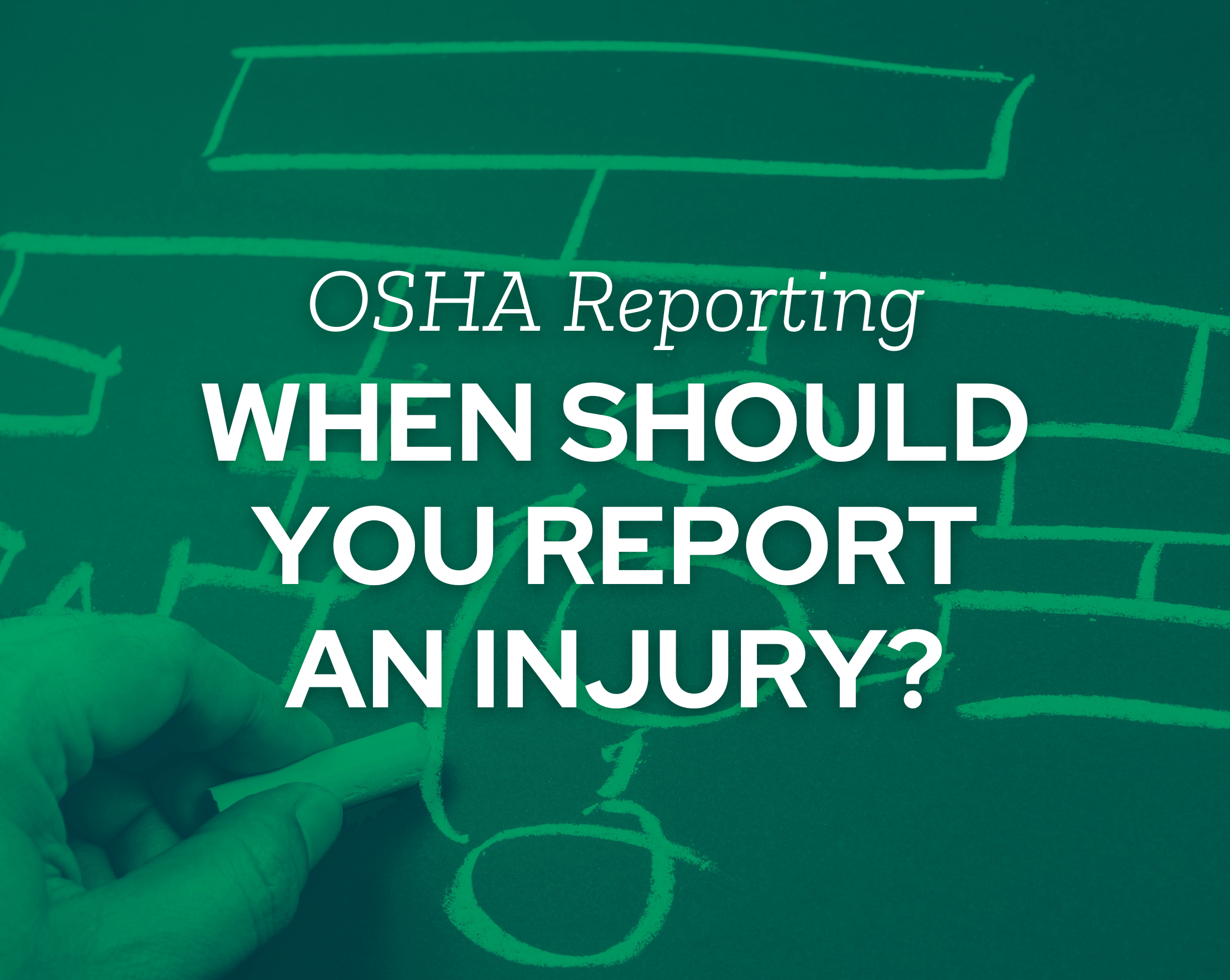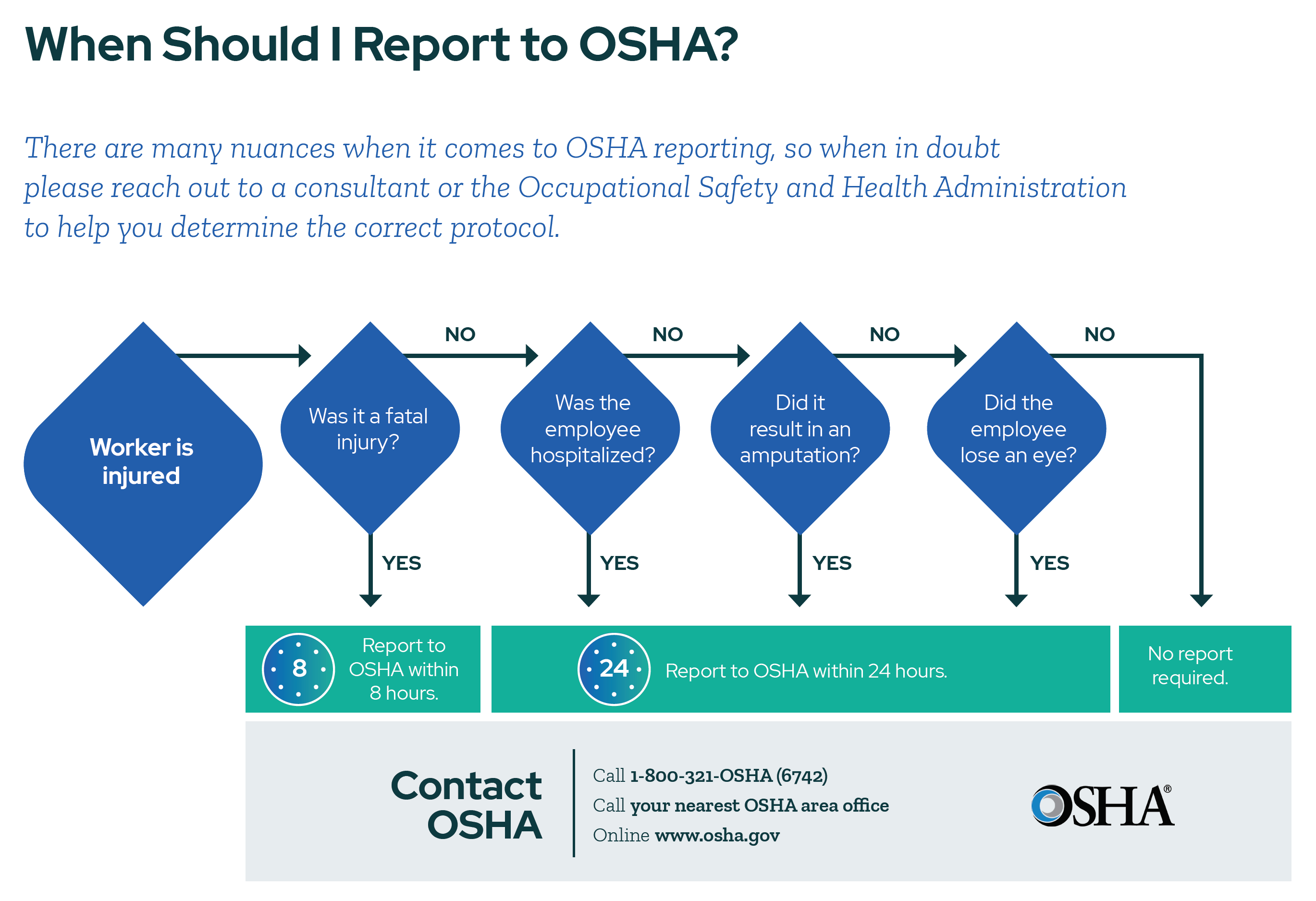When Should You Report an Injury to OSHA? (Flowchart)
We hope you never have to refer to this post EVER. But let’s face it, we work in an industry filled with sharp objects, noxious chemicals, heavy machinery, and distracted workers. For all the hard work you’re doing to build up that safety culture within your organization, keep these OSHA injury reporting timelines in your back pocket just in case something falls through the cracks.
Read up on all of the deadlines and best practices in the
OSHA Reporting Resource Hub
OSHA Injury Reporting Timelines
Here’s a quick flowchart to help you understand when you should report an injury to OSHA.
All employers must report workplace-related fatalities and serious injuries to OSHA.
In most cases, that means recordable workplace incidents need to be reported, frequently within hours.
Fatalities must be reported to OSHA within 8 hours.
Serious injuries must be reported to OSHA within 24 hours. Examples of serious injuries include…
- Any in-patient hospitalization of one or more employees as a result of a work-related incident. This encompasses all formal admissions to the in-patient service of a hospital or clinic for care or treatment. Note that hospitalization doesn’t necessarily mean that the employee stays overnight; if they’ve been admitted for in-patient treatment, the event must be reported.
- Any employee amputation as a result of a work-related incident. An amputation is defined as the traumatic loss of a limb or other external body part. This includes full and partial amputations—parts that have been severed, cut off, fingertip amputations (with or without bone loss), medical amputations resulting from irreparable damage, and amputations of body parts that have since been reattached. Non-amputations include avulsions (tissue torn away from the body), enucleations (removal of the eyeball), deglovings (skin torn away from the underlying tissue), scalpings, severed ears, and broken or chipped teeth.
- Any employee loss of an eye as a result of a work-related incident.
If a fatality occurs within 30 days of the work-related incident, or if a serious injury occurs within 24 hours of the work-related incident, you must also report the event to OSHA.
Deep Dive into OSHA Reporting Requirements
What’s recordable? What’s reportable? Am I exempt? How do I tell all the OSHA forms apart? Got lots of questions? We’ve got lots of answers in the OSHA Reporting Resource Hub.
KPA makes OSHA electronic reporting—and all elements of OSHA compliance and workforce health and safety—as easy as possible. Complete and file OSHA Forms 301, 300, and 300A quickly and accurately with KPA EHS Software.
Learn how we can save you time and money. Take a Test Drive >>


